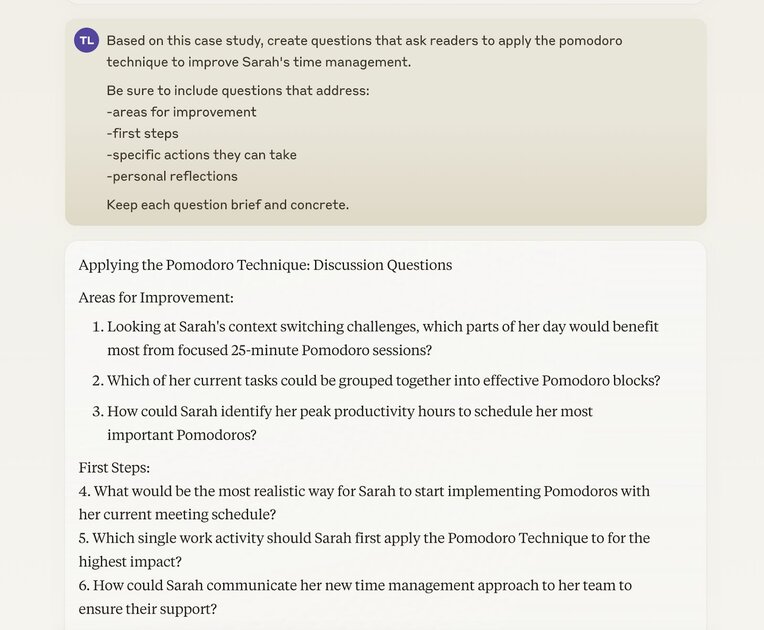Instead of just presenting a story with a neat solution, turn your case studies into interactive learning experiences. Here's how:
1. Start with a Relatable Scenario
Present your case study protagonist with challenges that mirror your students' pain points.
For example, here's how we introduced Sarah, a digital marketing manager struggling with time management:
"Sarah was working 12-hour days, constantly missing deadlines, and feeling burned out. Despite her strong track record as an individual contributor, her recent promotion to team lead left her drowning in a sea of meetings and urgent requests."
Notice how specific yet relatable this is?
Most managers can see themselves in Sarah's situation.
2. Add Implementation Details
Don't just describe the problem - show exactly what wasn't working:
- Tried traditional to-do lists but they became overwhelming
- Attempted time blocking but constant interruptions made it impossible
- Tested productivity apps but spent more time managing them than working
3. Engage Before Revealing the Solution
Here's the magic trick: Before showing how Sarah solved her problems, ask students how they would help her. This turns passive reading into active problem-solving.
Include prompts like:
- "Looking at Sarah's context switching challenges, which parts of her day would benefit most from focused work blocks?"
- "How could Sarah identify her peak productivity hours to schedule her most important tasks?"
- "What would be the most realistic way for Sarah to start implementing these changes with her current meeting schedule?"
